Beth Tabler's Blog, page 195
April 17, 2022
Review – Hearth Magic by M.A. Phillips
 After the events of RIVER MAGIC, Cian O’Connor and Anthony Russo must grapple with their relationship to the land, the spirit realm, and each other. One man wants to support Lacey and protect her from another otherworldly maelstrom. The other needs her help as he confronts an angry presence in his home so he can move on with a new lover.
After the events of RIVER MAGIC, Cian O’Connor and Anthony Russo must grapple with their relationship to the land, the spirit realm, and each other. One man wants to support Lacey and protect her from another otherworldly maelstrom. The other needs her help as he confronts an angry presence in his home so he can move on with a new lover.
Are Cian and Anthony’s lives more entwined than they ever imagined?
“The medium, the conservationist, and the poacher, all drawn together by a cord of fate.”
A new Rituals of Rock Bay tale featuring kitchen magic, romance, redemption, and the spiritual bonds that link us.
https://www.amazon.com/Hearth-Magic-Rituals-Rock-Book-ebook/dp/B08RRMB1LF
I read River Magic, the first book in Phillips’ Rituals of Rock Bay trilogy, a couple of years ago, and it was early in my venture into romance territory, where I now hold permanent resident status. I really enjoyed the mix of contemporary romance, Pagan mysticism, and fabulism, and it was a delight to return to this world and see some of the same characters, along with some new ones, in this unique crossover series. If you’re a romance reader, it hits the right beats, but the fabulist and Pagan elements carry equal weight, so I don’t think it can be called a pure romance. It’s this perfect mix that makes Phillips’ books such magical reads.
Whereas River Magic has a classic friends-to-lovers romance arc, Hearth Magic is more complex, with an established couple (Lacey and Cian) from the first book, along with a major side couple (Anthony and Margaret). The romance aspects are cozy and just a little spicy, without getting too specific about parts and the like. But the most interesting part of the book for me, besides the totally unique fabulist element, was the relationships between Lacey, Anthony, and Cian. It’s messy, since Anthony had a thing for Lacey in the previous book, and Cian’s jealousy about the developing friendship between Lacey and Anthony makes for some angsty moments. To be honest, I hated Cian at a few points in the book, but that was by design—his struggle to accept Anthony’s role in Lacey’s life, and in his own, is very realistic, and his reactions are totally understandable. True to the Pagan romance roots of the book, you can rest assured the problems will be solved with a little help from the spirit world, but the struggle is real, and the solution feels earned. We need more of this in books—overcoming jealousy is hard work, and Phillips shows that work on the page, with satisfying results.
Another satisfying aspect of the book is the depiction of Pagan beliefs, which are lovingly detailed and integral to the plot. Lacey’s spiritual practice was highlighted in the first book, and we saw Cian developing an interest as well, and in this book, we learn along with Cian and Anthony as their understanding of and engagement with Lacey’s community grow. Lacey follows a spiritual figure known as Brigid, and the small moments of her and Cian’s daily practice are a gift of warmth, as are the larger gatherings of the book’s Pagan community. There are moments of tension with some of the characters’ Christian upbringings, but everyone makes strides toward being more understanding and appreciative of the diversity of experience, which is a delight to read.
Speaking of delight, Phillips’ prose is gorgeous. I was frequently drawn to individual sentences or passages of lyrical beauty, which enriched the reading experience without slowing me down. Phillips has a way with description of both the physical and the emotional/spiritual landscapes that pull you forward in your reading but linger when you’re away from the book.
Here are a few passages of physical description that stuck with me:
“The small meadow was already an undulating pond of vegetation.”
“Wild grain, giddy after several days of sun, reached and danced in the breeze.”
And the emotional bits hit just as hard:
“She wore her grief like a poorly-cared-for tattoo.”
“Their plan had fallen through so hard, it left scars.”
“Now they were both gone. Mom was a wraith of her old self, and Bella was angry at the world. Anthony existed in between.”
Perhaps the best moments in the book are where the physical and the emotional collide:
“She reminded Cian of a sheltered section of the river alive with lily pads and cattails.”
“She hadn’t seen him blush so fiercely in a while, and Lacey wished she could bottle that vision. She’d keep the pigment in her tea cabinet and add a drop whenever she needed a dose of warmth.”
The last detail that needs mentioning is Phillips’ use of fabulist elements. On the off chance you aren’t familiar with the term, it’s a bit like magical realism—fantastical elements seamlessly woven into the real world so that they seem to be natural extensions of it. Magical realism is most properly applied to postcolonial literature with these characteristics, especially from Latin America, so I use the term fabulism here.
In River Magic, we saw a mermaid unlike any other I have read about, which is not a spoiler since Phillips talks about it in social media posts. The spoilery aspects of the mermaid are truly memorable, and the fabulist elements of Hearth Magic are equally innovative. You may have encountered beings in literature similar to the ones shown or hinted at in the book, but you have never encountered them like this. Phillips’ books have a way of making the natural world seem just a trifle more magical, and the magical world just a smidge more natural, and the result is something I haven’t read anywhere else. I spent way too long between reading the first and the second book, and I won’t make that mistake with Forest Magic, the third book in the series, which is available now.
Check Out Hearth Magic by M.A. Phillips About the author A. Phillips lives in Northern NY with her husband, daughter, and two cats. She is a writer, English teacher, and practicing Druid. Some of her short stories have been published in Stone, Root, and Bone magazine. Her books feature magical realism, contemporary Pagans, and romance.
A. Phillips lives in Northern NY with her husband, daughter, and two cats. She is a writer, English teacher, and practicing Druid. Some of her short stories have been published in Stone, Root, and Bone magazine. Her books feature magical realism, contemporary Pagans, and romance.
Her Rituals of Rock Bay trilogy includes River Magic, Hearth Magic, and Forest Magic, all published by Shadow Spark Publishing.
When she isn’t writing, you can find her in the garden, sewing, or enjoying a book with a side of tea. You can read more about her spiritual and creative journey on her blog ditzydruid.com, or on Twitter & Instagram @ditzydruid
The post Review – Hearth Magic by M.A. Phillips appeared first on BEFOREWEGOBLOG.
April 14, 2022
Review – The Chosen Twelve by James Breakwell
The Chosen Twelve by James Breakwell touts itself as a Lord of the Flies and Phillip K. Dick type story. For the most part, it does hit those marks without straying too far into either one to be uncomfortable for readers. Which I think is this story’s most significant flaw. The subject matter should be uncomfortable. However, even with me wishing that Breakfield took a much bigger leap to the dark side, this is a great novel that I thoroughly enjoyed.
 The Chosen Twelve starts with, “God lived in the coffee maker on deck four. Only Gamma Knew.” Gamma, one of humankind’s last organic beings, is standing before a door that may or may not be trying to kill him. On the other side of this door might be God. If only he could make it through this door.
The Chosen Twelve starts with, “God lived in the coffee maker on deck four. Only Gamma Knew.” Gamma, one of humankind’s last organic beings, is standing before a door that may or may not be trying to kill him. On the other side of this door might be God. If only he could make it through this door.
You see, in Gamma’s world, most of the machines are trying to kill the organics. Their programming has fizzled and popped and, in many cases, gained sentience. The machines have learned that humans should die. If Gamma steps through this door, he could be crushed to death. But on the other side, there might be answers. Gamma’s life has been long, and he has been kept in the proverbial dark by the machines that control his survival. But like a man searching for water in the desert, Gamma believes that he can get answers if he can just make it through this door.
Gamma runs through the door, but the door is too quick and catches his arm and almost severs it. He begins to scream, but the ship is so big and full of so many things trying to kill him; the odds are that he will die with his arm trapped like a bear caught in a bear trap.
The “children” of the story, all 22 of them, are the last humans in the universe. The artificial intelligence that controls their ship grew them from embryonic form with the help of another machine designated, Edubot. The 22 fledgling humans were raised and educated according to the machine’s ultimate goals. The humans would survive and help repopulate a planet and serve the machines. Thus helping create new computers from the raw materials on the colonized planet, they found. The children also live exceptionally long lives, with the help of technology, but are kept at the physical maturation age of 12.
They are 12 years old, but not really.
The machines waited until the right moment to send the children to the planet and begin reconstruction, and that time is now.
Conflicts arise with the AI that controls the humans and with each other. We get our Lord of the Flies moments with that many different personalities and skill levels and only 12 seats to go to the planet. Humans can be real bastards to each other when there are scarce resources.
I enjoyed the characters of Gamma and Delta quite a bit. They stood in stark contrast to some of their classmates—especially Delta, who raised herself above her classmates in both skill and desire for a better world. The cast of characters is very long, named for the Greek alphabet, and they drop like flies. You care a great deal about some characters, while others pass by like a ship in the night.
Even with the level of deceit and violence the characters display, it doesn’t venture near enough into the darkness of the human psyche for me to honestly believe in the predicament they face. These aren’t children; their bodies belie the minds encased within, and I would expect them to act as such. Delta comes close, though. She starts to understand the necessity of some of her choices and feels the moral burden they entail.
There are certainly some very dark moments and bloodshed in The Chosen Twelve. The fight scenes are frenetic and well-written. It was hard for me to imagine swords in space like this, but Breakwell makes it work.
This is a highly imaginative novel. The predicaments the characters face are just shy of excessive and ridiculous, but if anything is possible, the highly imaginative and crazy can become plausible. Almost cherry-flavored food rations that you have to beg machines for, check. A robot that thinks of itself as a king, check. A metallurgist making swords that can cut through anything, check. Breakwell makes the scenarios work. And while I couldn’t entirely shed disbelief, I was highly entertained by the dark comedy, fight scenes, and narrative.
I think The Chosen Twelve story will engage readers who like their science fiction and fantasy on the darker side, but not so dark that it is pitch black. Breakwell makes this highly imaginative story work and it is worth reading.
Check Out The Chosen TwelveThe post Review – The Chosen Twelve by James Breakwell appeared first on BEFOREWEGOBLOG.
Review – Skald’s Black Verse by Jordan Loyal Short
THE SKALD’S BLACK VERSE by Jordan Loyal Short is a grimdark space opera setting that has all the appeal of Warhammer 40K but more in-depth characters as well as a deeper dive into the lore. I think if you happen to like black as midnight settings and well-written characters with a juxtaposition of the sci-fi with Medieval then this is definitely the book for you. If you’re not, you should still read it because it’s damn good.
 In the far future, the Federation is an empire that stretches across the stars with a theocratic dictatorship that is enforced with its legions. However, while space travel and magic exists, the Federation has been crumbling for millennia. Most of the worlds inhabited by humans are barely above Medieval technology levels, living in filth and struggling for survival.
In the far future, the Federation is an empire that stretches across the stars with a theocratic dictatorship that is enforced with its legions. However, while space travel and magic exists, the Federation has been crumbling for millennia. Most of the worlds inhabited by humans are barely above Medieval technology levels, living in filth and struggling for survival.
The planet Skolja is one of those planets, with its population living in a handful of villages that were conquered by the Federation three generations ago. The local culture was suppressed, the religion banned, and puppet rulers were established that have to play middleman. It’s a bad situation, particularly as the local cybernetically-enhanced legionaires despises where they’re stationed and the locals despise them right back in turn. It’s a bad situation about to get much worse.
Unfortunately, for the planet Skoja, there’s a comet that’s about to hit their planet. It might hit their moon but if it does, then the resulting debris will still destroy their world. The only difference will be a few more hours of life before everyone dies. There’s no chance to evacuate even a fraction of the people and barely any to get the legionaires off. That’s assuming they can get anyone to believe the disaster is coming in the next few days.
The protagonists are an interesting mixture of archetypes. Hennik is the son of a local collaborator mayor and more interested in magic than running their village. He dreams of the stars and his creation has the potential to take him there. Unfortunately, he doesn’t realize the danger he’s in as a symbol of the oppression his people are suffering. Lyssa is a young innkeeper’s daughter that wants to be more but is stuck with traditional gender roles in a society that doesn’t understand she wants more. She’s also girlfriend to Bohr, who is a half-breed of the invaders and locals as well as tortured by his insane grandfather. He’s also someone who carries a dreadful curse that may bring his people revenge. These are all fascinating characters and just a sample of ones that Jordan Loyal Short brings to life.
The book touches on things like the politics of oppression, the destruction of local culture, generational divide, and the suffering of people born between occupiers and the occupied. However, it’s mostly a science fiction fantasy and that carries the story well beyond any of its politics. The characters are rich, the atmosphere is dark, and the ending exceptionally well done. It is only the start of a trilogy exploring the Federation and I am eager to explore where the characters go next.
Check Out Skald’s Black Verse by Jordan Loyal Short
The post Review – Skald’s Black Verse by Jordan Loyal Short appeared first on BEFOREWEGOBLOG.
April 13, 2022
Review – The Best Thing You Can Steal by Simon R. Green
The Best Thing You Can Steal, by Simon R. Green, is the start of a new series starring a group of thieves and scoundrels set in an urban fantasy world where magic is real. Each group member has a unique set of skills that make them invaluable for the planned heist. Think Ocean’s 11 meets Nightside with a bit of Dresden Files, and you have this new series. It is such fun.
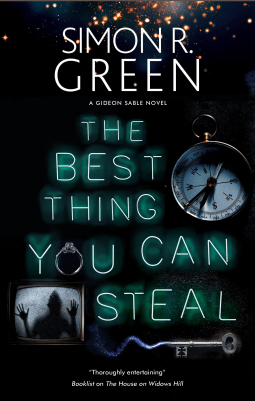 “Welcome to London, but not as you know it. A place where magics and horror run free, wonders and miracles are everyday things, and the dark streets are full of very shadowy people . . .“
“Welcome to London, but not as you know it. A place where magics and horror run free, wonders and miracles are everyday things, and the dark streets are full of very shadowy people . . .“
The story starts with introducing a gentleman scoundrel named Gideon Sable, and no, that is not his real name. He stole this identity like he steals most things, but he now wears this persona like a second skin. He has become the legendary namesake, and all it was to be the master thief, Gideon Sable. And boy, does Gideon he have a heist in mind.
Gideon is the brains of this heist, the cunning rogue who has plans inside plans. More importantly, Gideon is insanely likable. Imagine Danny Ocean but with magic items. I liked him from the first pages of the story, which is a massive credit to Green as an author.
Aside from Gideon, you have his fabulous collection of rogues and malcontents, the Damned, the Ghost, the Wild Card, and Gideon’s ex-girlfriend, Annie Anybody. The Ghost is just that, a ghost. He can move through spaces and is only visible to a select few. The Wild Card is a man who has seen some things that make him a complete wild card. Luck bends and twists in weird ways with him. You really have no idea what will happen in his presence. The Damned is a soul who is cursed. He was asked to steal something unstealable from a celestial being, and in doing so, he became something else. Even shadows slink away from him. He is not a man to be trifled with. The last is Gideon’s former flame, Annie anybody, a woman who can be anyone; luck and perception bend to her. Her powers are a bit hit and miss but interesting.
“And we set of with speed for the bright lights of London. A car full of weird with a ghost on top.”
This book is pure fun. The Best Thing You Can Steal isn’t perfect. The caper wasn’t as convincing as I wished it had been, but I think that takes a solid back seat to the fantastic characters and powers. Again likening it to Ocean’s 11, you didn’t watch Ocean’s 11 for the intricate heist. You watched Ocean’s 11 for the characters coming together in their respective elements and doing some thievery. The Best Thing You Can Steal does this exceptionally well, and it is worth checking out, as is pretty much any of Green’s books. His Welcome to the Nightside books are legend
Check Out The Best Thing You Can Steal By Simon R. GreenThe post Review – The Best Thing You Can Steal by Simon R. Green appeared first on BEFOREWEGOBLOG.
April 12, 2022
Review – Behind Blue Eyes – War Games by Anna Mocikat
BEHIND BLUE EYES: WAR GAMES is the third book of the BEHIND BLUE EYES series by Anna Mocikat. The series is a cyberpunk thriller story based around the decadent corporate-ruled nation of Olympias which consists of the entire Western Hemisphere.
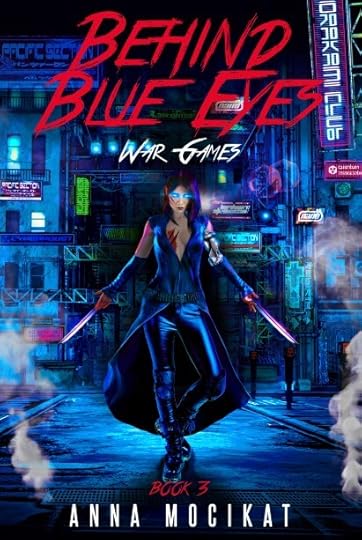 The Olympias Corporation controls North and South America using superpowered cyborgs called Guardian Angels with the striking condition of glowing blue eyes. Each of these soldiers is brainwashed to loyally serve their leader, Metatron, except for one who has managed to free herself: Nephilim.
The Olympias Corporation controls North and South America using superpowered cyborgs called Guardian Angels with the striking condition of glowing blue eyes. Each of these soldiers is brainwashed to loyally serve their leader, Metatron, except for one who has managed to free herself: Nephilim.
Anna Mocikat is one of the foremost members of a new crop of independent science fiction artists that have emerged to tackle seemingly dead genres. As ALTERED CARBON and BLADE RUNNER 2049 indicate, cyberpunk isn’t so much dead as sleeping so I was interested in seeing if she could revive it. I’ve enjoyed each of the previous novels and their ability to mix social commentary with thrilling action.
War Games continues directly from Fallen Angels and deals with the serial killing corporate executive, Cillian Stavros, killing members of the Guardian Angels in horrifying ways. Worse, Cillian is being aided by Nephilim’s former lover, Jake, with the man having no care about the lives of anyone but his ex. Even when those lives are the people Nephilim called her friends and family. It’s an ugly look but makes the character far more interesting than the one-note love interest he was seemingly before.
This book finally introduces us to the Olympias board of directors. They are a real piece of work, I’ve got to say, being every bit as decadent and corrupt as Ancient Rome’s worst leaders. It is easy to believe Metatron when he says they have to be overthrown but given he wants to replace them with a cyborg nobility that he’s already shown himself to have no hesitation to brainwash, it’s unquestionable he’d be worse.
Strangely, my favorite part of the book is the character development for Nephilim’s creepy stalker, Finwick. Having adopted an orphaned girl Nephilim rescued from human trafficking, Finwick has been trying to provide for her. Unfortunately, they come from very different worlds and his actions against the Guardian Angels are forcing them on the run again. Watching him try to care for someone else while realizing he’s way in over his head with the criminal underworld was very entertaining.
I have some issues with the fact Nephilim continues to be brainwashed by Metatron as it’s not something that’s particularly enjoyable to read about. You want her to break free and take the fight to the Olympias Corporation, but I also appreciate just how good Metatron is at selling his ideology. He’s let her have more of a loose reign than most of his minions because he wants her to join him willingly. Yet, he’s not willing to risk her actually turning him down.
There’s a lot of awesome action sequences spread throughout the book as Anna Mocikat has a great talent for The Matrix-style scenes. The biggest complaint I have is the fact the book ends on a cliffhanger. There’s quite a few unresolved plot points just like the previous book, and I was hoping the stories would be more self-contained. On the other hand, the book is just good from start to finish.
Check Out Behind Blue Eyes – War Games by Anna MocikatThe post Review – Behind Blue Eyes – War Games by Anna Mocikat appeared first on BEFOREWEGOBLOG.
April 10, 2022
Tour – Excerpt of Duckett & Dyer Dicks for Hire by G.M. Nair

PROLOGUE
So This Is How It Ends . . .
“Listen, it’s not the worst idea I’ve ever had. And it certainly won’t be the last,” Stephanie Dyer said, just moments away from her death. The energies of the rip in multidimensional space-time crackled behind her, silhouetting her body and casting a shuddering, uneven blue pallor across the hardwood floor. Pushing her fringe of hair out of her eyes, Stephanie surveyed the living room one last time. It was a bit different than she remembered it. It hadn’t been that long, had it? A calming sense of nostalgia warmed her chest as she took stock of the scuffed, scratched floors and the body of the old woman that lay, unmoving, by the overturned armoire.
 As she turned to face the swirling blue abyss, the other conscious occupant in the room stirred. Clutching his side, Stephanie’s oldest friend Michael Duckett struggled to remain on his feet by bracing himself on the back of the armoire. Michael looked tired. Not as tired as she was — not by a country mile — but tired nonetheless. She couldn’t blame him. It had been a long road, and it would have to end here.
As she turned to face the swirling blue abyss, the other conscious occupant in the room stirred. Clutching his side, Stephanie’s oldest friend Michael Duckett struggled to remain on his feet by bracing himself on the back of the armoire. Michael looked tired. Not as tired as she was — not by a country mile — but tired nonetheless. She couldn’t blame him. It had been a long road, and it would have to end here.
“Please,” he said, “We have do this together.”
“No, Michael,” she refused to meet his gaze, “I need to do this alone. I started this loop and I need to close it. And to do that, I need you to trust me.”
“Steph—”
“I know I haven’t given you any reason to, and I’m sorry. I wish I could go back and fix that. But I tried and look how that ended up,” Stephanie chuckled before composing herself. She turned to him and their eyes met for what felt like infinity, “So for once, can you just pretend that I know what I’m doing?”
The room around them stood quiet. There was no movement aside from the rotating portal that hung in the middle of room over the toppled coffee table.
“I’m sorry,” he continued, attempting to push up the glasses that had been lost long ago. “I’m sorry I called you an embarrassment.”
Stephanie felt the hint of a grin form at the corner of her mouth. “But I was an embarrassment.”
“Yeah. But you’re not supposed to say that,” Michael returned a tentative smile that left before it could fully form. He looked away. “But you’ve always been my best friend. And . . . and you were right, too.”
“About what?”
“It was kinda fun to play detective with you. Just like it used to be when we were kids.”
Stephanie could do nothing but nod, with words caught in her throat. She couldn’t bring herself to explain what this meant to her. It would be too complicated. It was always too complicated. She didn’t understand it most times.
“I . . . ” Michael sputtered a bit. “I don’t want you to die.”
“Neither do I! You think I’m doing this for my health?” Of course, trying to lighten up dour times with a joke was Stephanie’s natural instinct, and her last moments were no exception. But, to her credit, she pivoted right back into earnest sincerity. “You’re my best friend, too, Michael. I’m trying to help you, like you always did for me. Just think of this as my way of saying thank you.”
 “For what?”
“For what?”
“For putting up with me,” Stephanie winked and let out a small sigh before turning to the portal, which had begun to emit a low, angry hum. She didn’t know what lay on the other side but, in her heart, she knew that the next jump would be her last. The story couldn’t end any other way. And it she had to try to end it. It had to be her.
So Stephanie leapt headfirst into the roiling tides of the space-time continuum, letting the blue energies wash over her body one last time. As she left this universe and this time behind, she closed her eyes, all too ready for the inevitable.
It may have been the end, but at least it was a pretty badass way to go.
CHAPTER ONE
Hot Date With Destiny
Michael Duckett was a young man with a decent head on his shoulders and a crippling anxiety that prevented him from ever using it. He had just slogged his way through another day at work, punching numbers into a computing box for no reason besides enriching his corporate overlords. It was a dreary, soul-crushing job that left his bank account only a little less than empty and his body a lot more than tired and drained every night. Tonight was no different, aside from the fact that it was Wednesday and that meant it was laundry day.
A holdover from his childhood, the “Wednesday-Laundry Day” mantra had been championed by his micromanaging mother. Despite the fact that she—now in her self-dubbed “sexy sixties”—was immersing herself in whatever horrifying bacchanalia they got up to in Boca Raton and was not around to badger him, Michael had the laundry day itch branded onto his soul. Not to mention a myriad of other more socially debilitating neuroses he had yet to work through.
Still, Laundry Day had its share of perks. That is to say, one perk in particular that went by the name of Terri Bradshaw. In a rare stroke of luck, Terri and Michael happened to have the same laundry schedules. She had introduced herself some weeks ago over the folding tables, and Michael found her very easy to talk to, which, for someone who used to suffer minor panic attacks before making phone calls, was an even rarer godsend.
“So, do you come here often?” Michael had asked.
She chuckled and turned back down to the jeans she was folding. Her auburn hair swished to cover her face and a smile. “Nice one.”
“Uh . . . yeah,” Michael wasn’t sure what joke he had made, but he leaned into it. For the first time in a long while, his innate fear of being judged unfit by the opposite sex was nowhere to be found. This was an opportunity he refused to miss, so he leapt on it. “I’m Michael. Michael Duckett.”
“Terri. Nice to meet you.” Terri placed her jeans neatly into her laundry bag. “So, Michael Michael Duckett, what do you do?”
Michael deflated a little. The mere mention of his boring job sent his stomach into an involuntary stress gurgle. He hated being asked about it almost as much as he hated the job, “Oh, I’m an Analyst . . . at The Future Group.”
“Oh, you work for The Future Group?” Terri leaned back a bit, eyebrows raised. She was still interested. “My brother works there! Do you know Jacob?”
“Jacob? I love that guy. Of course I know Jacob!” Michael did not know Jacob. In fact, as unlikely as it seemed, Michael had never met anyone named Jacob in the 24 years he had skulked about this Earth. The Future Group employed over 7,000 people. Perhaps one or more could have been named Jacob. He didn’t really know. Either way, he’d gotten himself in deep already, so he just smiled and nodded.
“He loves working there,” Terri continued. “Says it’s the best job he’s ever had!”
Michael did not share Jacob’s assessment. He fidgeted with his glasses, running his fingers along the thin frames. “Yeah, uh, it has its ups and downs.”
“Hah, well Jacob doesn’t stop raving about it.”
“Yeah, that’s ol’ Jacob. He’s always . . . always . . . raving . . . ” Michael trailed off. He had no idea what else he could say about Jacob, besides the fact that he had good taste in sisters. Luckily enough, the conversation took a turn and Jacob was never mentioned again. And so it went with Michael and Terri sharing a good time amongst the fumes of noxious chemicals synthesized to mimic the pleasant scent of spring meadows.
As the weeks passed, they spoke more about their days (usually uneventful), their old college roommates (the worst), their favorite wines (hers rosé, his a dry pinot grigio), how Haagen-Dazs made the only good kind of chocolate ice cream (it was sweet, but not overwhelmingly sweet, and thus a delight to the palate, even when re-purposed for Rocky Road), and other topics Michael assumed normal people talked about.
Terri had a habit of good-natured ribbing, which Michael found endearing. Their rapport was fun and flirty, but Michael still possessed the underlying fear that it could turn on him at any moment, so he never asked her out, of course. Each subsequent Wednesday, he hoped it would be the day he would overcome the mental programming that had held him back since high school, but it never was. Today, though, this today would be that day.
Right?
Carting his wet clothes from the washer to the dryer, Michael thought of Terri, whom he had not yet seen today, though his time at the laundromat was half over. It broke with the tradition they had established. Well, he had established, anyway. The wet slops of seven identical powder-blue button-downs slapped against the porous metal cavern as he moved on to his unmentionables and inserted a handful of moistened boxer briefs, all gray.
After his clothes were safely spiraling into a state of dryness, Michael bussed his cart over to a set of hard plastic chairs that had been designed for maximum lumbar injury. He sat for a while, shifting his weight into increasingly painful positions, figuring the distraction would keep him from obsessing over Terri. Meanwhile, the television hanging above him spoke dire warnings of missing persons. A local doctor had mysteriously disappeared from his bedroom in the middle of the night and the police, as usual, were baffled. All that and what an upcoming spate of thunderstorms would mean for his weekend would follow after a few messages.
Michael’s attention, however, was drawn to the irritating fact that a single piece of clothing remained in his cart: another pair of underpants that had camouflaged against the side. This one, however, was conspicuously dry. The corner of his eye twitched with the impotent rage associated with the thought of having missed a single item of laundry. But perhaps it was unwarranted. Maybe it was a clean pair that had stowed away with its filthy brethren. Only one way to be sure. Michael raised the underpants to his nose and gave them a cursory sniff. He was met with the fading scent of faux mountain air. His suspicion was correct: they were quite clean.
What Michael had inconveniently forgotten was that he was in a public laundromat. Public laundromats tend to be occupied by people, and this one was no different. Michael was sucked back into the moment by a short burst of stifled laughter. Across the way, Terri leaned against the detergent vending machine, wearing a green top and a knowing smirk.
“Nice one, slick,” she shook her head.
“Yeah, well, they were clean!” Michael removed the underpants from his nose and tried to sound authoritative, but his declaration ended with a sort of yelp as he walked towards her.
Terri giggled. He could marry that giggle. “I’m sorry, did I embarrass you?”
“Um . . . no. No! Not embarrassed at all. How’re . . . you?” Michael pushed his glasses up the bridge of his nose.
“I’m alright,” she said, loading her washing machine. “Just a bit late today.”
“Oh, are you?” Michael pretended not to have noticed. He feared the implication that he had been keeping track of her schedule and their usual rendezvouses. He had, but still. Also, he didn’t think his joke about a “laundrez-vous” would land. His jokes rarely did.
 “Hey, listen,” Terri looked away, “I’m in a bit of a rush today, so I’ll just cut to the chase and ask: do you want to get dinner sometime this week?”
“Hey, listen,” Terri looked away, “I’m in a bit of a rush today, so I’ll just cut to the chase and ask: do you want to get dinner sometime this week?”
Alarms went off in Michael’s brain, signaling a code blue. Never having had a code blue before, there was no plan of action in place. So all that came out of his mouth was a slow, droning “Uh . . .” followed by “. . . dinner?”
“Yeah,” Terri smiled and Michael’s heart quickened to a pace just short of a serious medical emergency. “Do you have a place you like? I could do anything.”
“I know a great Italian place down on Concord Street! Let’s go there!” He wasn’t certain how he knew of it, but, similar to the way a surfer’s life might flash before their eyes before a shark attack in an attempt to glean information that could prevent their death, Michael, in a more mundane application, recalled a slew of reviews he had seen on the internet. A restaurant on Concord Street stuck out as the only place that was infestation free after last month.
Terri smiled again and her hazel eyes sparkled. “I can meet you there at 6:30 tomorrow. Does that work for you?”
“Great. That’s great!” Michael’s grin froze on his face and began to hurt his cheeks as time passed. Had that really worked? As his mind wrapped itself up in questions, he hardly noticed as a full half-hour sped by. Still transfixed and, honestly, confused by what had happened, he folded and packed his dried clothes and slung his bag over his shoulder. He waved goodbye to Terri as he slipped out the door. The smile persisted. If it continued for four hours or more, he would have to call his physician.
* * *
It was dark outside by the time he left. Michael couldn’t see his watch, but it was definitely around 9:30. He walked down the street past a row of cars, neatly angle parked. At the end sat Michael’s 1982 Mercury Zephyr, a car that he lovingly referred to as “the Garbagemobile.” The otherwise red car had a canary yellow passenger’s side door that failed to function since its previous owner had opted to weld it shut for undisclosed reasons. Still, the trunk worked well enough. Michael thumped his fist on the corner and it popped open, allowing him to toss in his laundry. Or was it clothes, now? When did your laundry stop being “laundry” and become “clothes”? When you folded it? When you brought it home? Or when you put it in your dresser? Michael enjoyed this pointless line of questioning brought on by the euphoria of his potential date with a beautiful woman, as it distracted him from overthinking about said date.
Michael slammed the trunk shut and turned to find the crazed blue eyes and wild hair of an entirely different, entirely angrier woman who had definitely not been there a second ago. He jolted backwards and tumbled onto the asphalt. A jeep whizzed by his head at what felt like 50 miles per hour, but was probably more like 5.
“Oh my God! What the hell, lady?” A situation in which panic was natural. Michael almost felt at home.
“You’re Michael Duckett!” The woman declared in a voice so far from Terri’s melodic tones, it would need a GPS to get within striking distance.
“Uh . . . yeah?” was all he could muster. “How do you know my name? Who are you?”
“I need your help!” She seemed less interested in his questions than her own agenda, whatever that was.
“You need . . . my help?” Michael pulled himself to his feet by leaning on the Garbagemobile’s rear bumper, which shuddered against the rusty nails holding it on. “For what?”
“I saw your ad. I need to hire you. It’s urgent.”
“Sorry. My ad? I think you have the wrong guy. I’m not for hire.” Michael brushed himself off and, being certain his life was no longer in any significant peril, took stock of the situation. He sidled past the woman, who was wearing medical scrubs beneath the folds of a long brown coat, and onto the sidewalk. If she had escaped from a mental hospital, killed an orderly, and stolen his clothes, that would explain the scrubs. It was a bit of a reach, but not an unreasonable conclusion given the circumstances.
“I have a case for you,” she said. Her eyes had a cold fire behind them that complemented the harsh red lipstick that popped against her dark olive skin. She would have been beautiful if she hadn’t been completely off her rocker.
“Yeah, a . . . nut case,” Michael winced. Another joke that didn’t land tonight, but there really wasn’t much time to workshop it. “Lady, I can give you bus fare or . . . uh . . . whatever you need. But I’m pretty sure you have the wrong person.”
“No. I definitely don’t. You’re the detective!” Despite her manic motions, the woman’s frizzy, curly blast of bright blonde hair refused to move very much.
“Detective? What the hell are you talking about?” Michael inched toward the door of the Garbagemobile. “I’m not—”
The woman slapped her hand on the door, blocking his escape. With her other hand, she removed a smartphone from her purse and thrust it at him. “I recognized you from your photo.”
Michael left the smartphone in her hand and awkwardly scrolled down with a single finger. It was not often that Michael got to use a fancy smartphone. His own was an elderly flip affair with a creaky hinge. The screen on this one was brighter and boasted a higher resolution which allowed the bold black headline to leap out of the bright white background in all-caps, silently yelling at him:
“MICHAEL DUCKETT AND STEPHANIE DYER – PRIVATE EYES FOR HIRE – NO CASE TOO TOUGH, NO CASE TOO CRAZY – REASONABLE RATES – ANY TIME DAY OR NIGHT.”
It was a simple internet classified ad—the Hail Mary of desperate schlubs seeking used leisure suits or unlikely missed connections. Below the headline was a picture of him and his oldest friend – and roommate two years running – Stephanie Dyer, standing side by side. It was cropped to focus only on their chests and heads, so Michael couldn’t place where or when it had been taken. Stephanie was making overenthusiastic gun fingers at the camera, while Michael seemed aloof in an attempt to appear cool. It had not worked.
Get Your Copy HereAbout the Author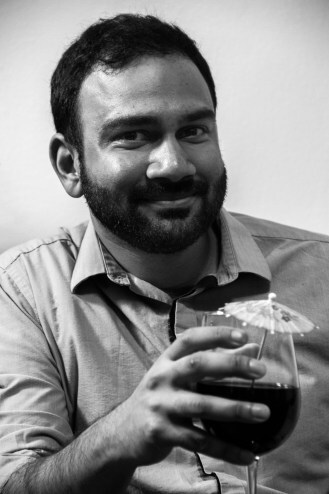 G.M. Nair is a crazy person who should never be taken seriously. Despite possessing both a Bachelor’s and Master’s Degree in Aerospace Engineering and a job as an Aviation and Aerospace Consultant, he writes comedy for the stage and screen, and maintains the blog MakeMomMarvel.Com. Now he is making the leap into the highly un-lucrative field of independent book publishing.
G.M. Nair is a crazy person who should never be taken seriously. Despite possessing both a Bachelor’s and Master’s Degree in Aerospace Engineering and a job as an Aviation and Aerospace Consultant, he writes comedy for the stage and screen, and maintains the blog MakeMomMarvel.Com. Now he is making the leap into the highly un-lucrative field of independent book publishing.
Duckett & Dyer: Dicks For Hire is his first novel, and in a world with a fair and loving god, it would be his last. Alas, he tends to continue.
G.M. Nair lives in New York City and in a constant state of delusion.
Twitter: @GaneshNair
Instagram: @NairforceOne
The post Tour – Excerpt of Duckett & Dyer Dicks for Hire by G.M. Nair appeared first on BEFOREWEGOBLOG.
April 9, 2022
Five Indie Cyberpunk Recommendation List
Cyberpunk is a genre that hit its peak in the Eighties but has still carried on like the little Replicant that could ever since. Really, it’s now split between present day cyberpunk (Watch_Dogs, Mr. Robot, Hackers) and far future experiences (The Expanse, Altered Carbon). However, I think the best place to find cyberpunk novels these days is the indie writing scene.
There’s something decidedly cyberpunk about going to writers not affiliated with the big corporations to get your fix about cybernetically enhanced humans, transhumanist themes, social satire, and street samurai action. Cyberpunk comes in many forms and just because we’re living in a world where everyone has a computer monitored by sinister corporate forces trying to sell us stuff doesn’t mean you can’t enjoy it still.
Five Recommended Indie Cyberpunk Novels:
https://beforewegoblog.com/5-cyberpunk-recomendations/
Five More Recommended Indie Cyberpunk Novels:
https://beforewegoblog.com/five-more-indie-cyberpunk-novels-to-check-out/
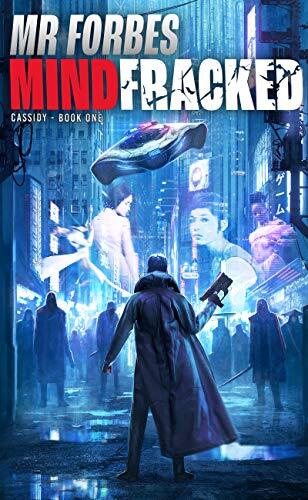 Cassidy is a body-hopping assassin working for a mysterious government organization that promises they will return his original form if he completes all of his assignments. Existing as little more than an AI, he has always believed this is true. However, awakening decades after he should have been set free in a friend’s body, he has to deal with the fact that everything he knew until this point was a lie. I really enjoyed Mindfracked and its various twists and turns that combine elements from Altered Carbon as well as The Matrix.
Cassidy is a body-hopping assassin working for a mysterious government organization that promises they will return his original form if he completes all of his assignments. Existing as little more than an AI, he has always believed this is true. However, awakening decades after he should have been set free in a friend’s body, he has to deal with the fact that everything he knew until this point was a lie. I really enjoyed Mindfracked and its various twists and turns that combine elements from Altered Carbon as well as The Matrix.
In the twenty-fourth century, rising sea levels triggered by World War have forced humankind into a handful of densely populated cities surrounded by massive seawalls. Digitized consciousnesses known as Shades prowl the streets in bodies that aren’t their own, carrying out clandestine operations ordered by the artificial intelligence created to shepherd humankind through the aftermath. Civilization clings to a tenuous thread.
Cassidy is one of the most experienced Shades in the Initiative. An elite operative with an impeccable record, he’s dedicated his life to combating the rampant organized crime that threatens the new world order.
But when a beautiful stranger shows Cassidy that his entire existence is a lie, everything he’s ever known begins unraveling around him. It isn’t long before his fight for justice becomes a fight for something much bigger…
…and the stakes are higher than he ever imagined.
Follow Cassidy through the rain-soaked streets of 24th century Manhattan as he fights like John Wick against a corrupt system of repression and control where the lines between ally and enemy are always blurred and trust is a dangerous gambit.
Pick up Your Copy2. Heartthreaded by James L. Graetz
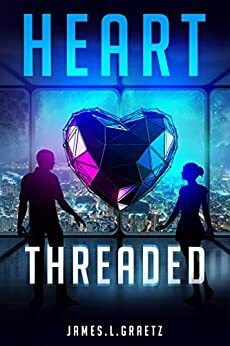 Hearthreaded
is a first-time novelist’s debut and I am genuinely impressed by the results. A homage to Romeo and Juliet with a number of twists and turns. Juliet’s father has created the Heart Thread technology that keeps track of everyone’s information as well as debts. Romeo is a man who hacks the previous technology to get people out of their crippling debts. It has its flaws and is a bit obvious in its parallels but I really enjoyed it from beginning to end.
Hearthreaded
is a first-time novelist’s debut and I am genuinely impressed by the results. A homage to Romeo and Juliet with a number of twists and turns. Juliet’s father has created the Heart Thread technology that keeps track of everyone’s information as well as debts. Romeo is a man who hacks the previous technology to get people out of their crippling debts. It has its flaws and is a bit obvious in its parallels but I really enjoyed it from beginning to end.
A debut new adult, coming of age science fiction about a world where heartbeats are currency, and the debts are for life. The ideals of a young couple from opposite sides of the track want to make a change.
For those who enjoy Marie Lu and Science Fiction Fantasy.
It’s possible to extend your life, and buy upgrades for your body, but the cost is a heartbeat debt.
Juliet isn’t just anyone, her father is the powerful CEO, the man who tries to enslave everyone with the new Heart Thread technology. She seeks help from an underworld hacker. They discover the Heart Threads that track debt have other more insidious uses. Together they form an unlikely bond, but can two people from such different worlds be together?
Juliet is caught between her loyalty to her father, her desire for freedom and doing the right thing.
Separated by class and ideals to change the world, Juliet will have to risk everything.
A fast-paced New Adult or Young Adult adventure set in a dystopian science fiction future.
If you love underdogs vs corporate control; this tension-filled dystopian science fiction adventure, HEART THREADED, is inspired by Shakespeare and Cyberpunk. A gritty adventure of young rebellion against class divides and the fight for hope.
No matter how many heartbeats, you only have one death.
Pick Up Your Copy3. Cerberus: Assassination Protocol by Andy Peloquin
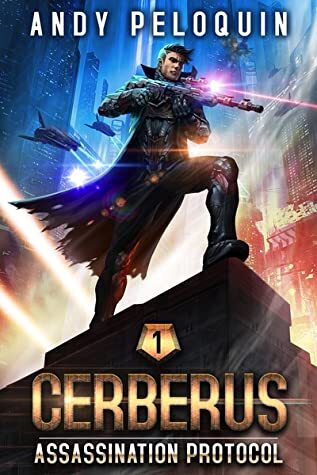 Nolan Garrett is a soldier crippled in the line of duty, working for the corrupt Empire. However, his sense of duty and desire to free his brother from prison convinces him to come out of retirement as an assassin. Outfitted with a superior AI and cybernetics, he can take down the galaxy’s worst criminals. Unfortunately, his superiors might actually be worse than the people he’s sent to hunt.
Nolan Garrett is a soldier crippled in the line of duty, working for the corrupt Empire. However, his sense of duty and desire to free his brother from prison convinces him to come out of retirement as an assassin. Outfitted with a superior AI and cybernetics, he can take down the galaxy’s worst criminals. Unfortunately, his superiors might actually be worse than the people he’s sent to hunt.
Nolan Garrett is Cerberus. A government assassin, tasked with fixing the galaxy’s darkest, ugliest problems with a bullet to the brain. Armed with cutting-edge weapons and an AI-run cybernetic suit that controls his paralyzed legs, he is the fist in the shadows, the dagger to the heart of the Nyzarian Empire’s enemies.Then he found Bex on his doorstep…A junkie, high on the drug he’d fought for years to avoid, and a former elite soldier like him. So he takes her in to help her get clean-Silverguards never leave their own behind.If only he’d known his actions would put him in the crosshairs of the most powerful cartel in New Avalon.Facing an army of gangbangers, drug pushers, and thugs, Nolan must fight to not only carry out his mission, but to prevent the escalating violence from destroying everything he loves.Cerberus: Assassination Protocol is the riveting, heart-pounding first book in the epic military sci-fi Cerberus series. If you like fearless heroes, non-stop futuristic action, and neck-breaking plot twists, you’ll love Andy Peloquin’s thrilling space opera series.Buy Cerberus: Assassination Protocol now to watch an assassin fight to protect the innocent!
Pick Up Your Copy4. Ten Sigma by A.W. Wang
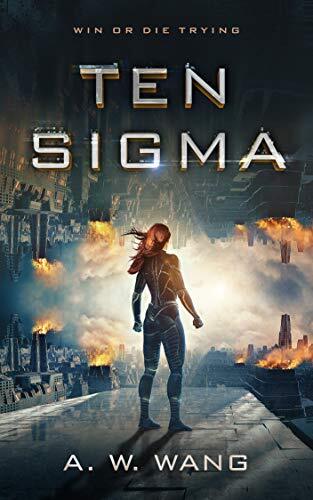 Mary has an impossible choice: dying of cancer, she is a drain on her family’s meager finances as well as emotions (or so she thinks). When the government offers to clear her debt if she agrees to participate in a brain scan program, she reluctantly agrees. The result is a horrifying series of virtual reality simulations designed to destroy her and rebuild her as the ultimate killer. A dark and psychological tale with a lot of fantastic action.
Mary has an impossible choice: dying of cancer, she is a drain on her family’s meager finances as well as emotions (or so she thinks). When the government offers to clear her debt if she agrees to participate in a brain scan program, she reluctantly agrees. The result is a horrifying series of virtual reality simulations designed to destroy her and rebuild her as the ultimate killer. A dark and psychological tale with a lot of fantastic action.
In future America, the downloaded people in the Ten Sigma Program fight endless battles. The struggles span all possibilities: face-offs with knives and clubs, skirmishes as Roman legionaries, pitched WW1 trench warfare, duels with ultra-modern hypersonic weapons, and everything in between. The combatants who live are rewarded with another battle until they reach the unreachable score of ten sigmas. Those who die are expunged from the system, gone forever. The methods, so harsh they go beyond anything possible in the real world, are necessary for the end goal: violent evolution to produce the greatest warriors in all of human history.
Who would choose such a fate?
Those with no hope.
On a wintry night, a government representative presents Mary, who is dying of incurable cancer, with the offer: a second chance at life and for those completing the requirements, a return to the real world in a fresh, healthy body. To save her family from bankrupting medical bills, she accepts.
After her consciousness is transferred into the virtual universe of the program, her essence is ripped apart and her memories shattered. She’s reassembled as the perfect killer.
As the life-and-death contests begin, she discovers the true nature of what lies ahead. But, she won’t surrender to the impossible and grimly embarks on the journey to return to her family while trying to save her soul.
Mature readers only: intense combat, graphic violence, horror elements, some sex, some language.
Pick Up Your Copy5. Neon Leviathan by T.J. Napper
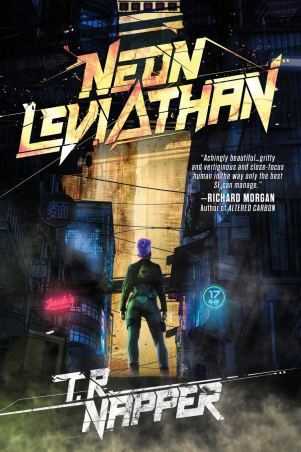 Neon Leviathan is a possible future classic for the cyberpunk genre. T.R. Napper shows a dystopian science fiction future that is the background for numerous short character-driven stories that feel all too believable. The aftermath of the Vietnam and Australian War in the future is full of broken veterans, broken homes, and struggling families. It’s really well-done science fiction and I liked it.
Neon Leviathan is a possible future classic for the cyberpunk genre. T.R. Napper shows a dystopian science fiction future that is the background for numerous short character-driven stories that feel all too believable. The aftermath of the Vietnam and Australian War in the future is full of broken veterans, broken homes, and struggling families. It’s really well-done science fiction and I liked it.
A collection of stories about the outsiders – the criminals, the soldiers, the addicts, the mathematicians, the gamblers and the cage fighters, the refugees and the rebels. From the battlefield to alternate realities to the mean streets of the dark city, we walk in the shoes of those who struggle to survive in a neon-saturated, tech-noir future.
Twelve hard-edged stories from the dark, often violent, sometimes strange heart of cyberpunk, this collection – as with all the best science fiction – is an exploration of who were are now. In the tradition of Dashiell Hammett, Philip K Dick, and David Mitchell, Neon Leviathan is a remarkable debut collection from a breakout new author.
Pick Up Your Copy
The post Five Indie Cyberpunk Recommendation List appeared first on BEFOREWEGOBLOG.
April 8, 2022
Review – The Finder of the Lucky Devil by Megan Mackie
THE FINDER OF THE LUCKY DEVIL by Megan Mackie is one of those rare finds that I stumbled on quite by accident and rapidly became a fan of not just the work but also the author. It’s been a long road to getting this book out again after a fascinating story of dealing with multiple publishers but it’s now out via self-publishing and I hope it’s a success for the author.
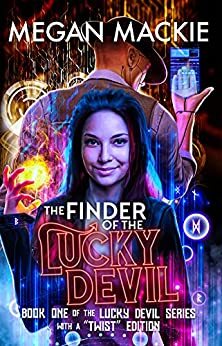 The premise is an eclectic one: in the near-future, humans and supernaturals live openly among one another while megacorporations have taken over a large chunk of the United States. If it sounds a bit like Shadow Run, it is and I don’t hold that against the book. I love genre-blending and cyberpunk with urban fantasy is rare enough that I think it is worth giving it a try.
The premise is an eclectic one: in the near-future, humans and supernaturals live openly among one another while megacorporations have taken over a large chunk of the United States. If it sounds a bit like Shadow Run, it is and I don’t hold that against the book. I love genre-blending and cyberpunk with urban fantasy is rare enough that I think it is worth giving it a try.
Anna Masterson is a young housewife who is married to a white-collar corporate when her entire life is turned into an absolute horror show by being kidnapped to get to her husband. She is forced into solitary confinement, tortured, and left a wreck of her former self. Except, they only want her to sign divorce papers which indicates that they may well be working for him. Rescued by her witch aunt, Anna must change her name and go into hiding under the assumed name Rune Leveau.
The Lucky Devil is a bar which has an unusual side business: if you come there and give some money to their animatronic devil then Rune will use her unique magical ability to track down missing objects. It’s kind of an interesting twist because it is such a small ability compared to so many other fantasy powers.
I like Rune because she’s a perfect reluctant hero. She’s escapes, survived really, a terrible situation and is entirely devoted to trying to put the past behind her. However, that’s not possible as a handsome cybernetic secret agent named Saint Benedict is out to track down Anna Masterson. Sparks fly between them but he is devoted to his missing wife and she’s determined to leave Anna Masterson dead.
Saint Benedict is an excellent love interest and perfect for these kinds of books, being mysterious and tough but not so dominating as to overshadow the heroine. He also has a reason not to immediately start a romance with the heroine, which is always good for these kinds of stories. I think people who like urban fantasy like Patricia Briggs Mercy Thompson or Kim Harrison’s Hollows series will find a lot to like in The Finder of the Lucky Devil.
This book is more on the urban fantasy side of things than cyberpunk and probably the better for it. It’s a very enjoyable story from beginning and sets up a lot of plot hooks that will, hopefully, be followed up on in sequels. I actually give this a strong recommendation and encourage fans of urban fantasy to pick it up.
Check It OutThe post Review – The Finder of the Lucky Devil by Megan Mackie appeared first on BEFOREWEGOBLOG.
Book Spotlight – Man Down by James Goodhand

What is Man Down about?
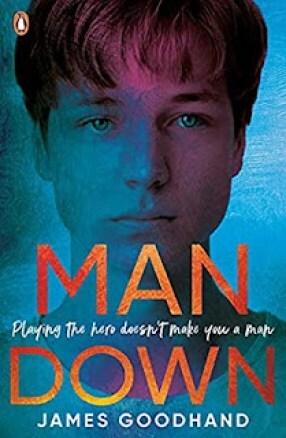 A man stands. A man fights. A man bleeds.
A man stands. A man fights. A man bleeds.
These are the first lessons you learn in a town where girls are objects, words are weak and fists do the talking.
Will’s more at home in the classroom than the gym, and the most important woman in his life is his gran. So how can a boy who’s always backed away from a fight become the hero who saves the day?
Because a disaster is coming. One that Will can prevent. But only if he learns the most important lesson of all: sometimes to step up, you have to man down.
A searingly powerful exploration of toxic masculinity, perfect for fans of Juno Dawson or They Both Die at the End .
What Folks are Saying About Man Down?
‘Staggeringly good . . . had me hanging on every word’ Louisa Reid, author of Wrecked and Lies Like Love
‘Good books make you feel something. Great books change the way you feel about everything. Man Down is a great book. No one is writing about young men’s lives with as much warmth, empathy and humour as James is right now.’ Samuel Pollen, author of The Year I Didn’t Eat
‘Utterly compelling, completely original and will undoubtedly be one of the standout books of 2022. An absolute must read’ – Adam Simcox, author of The Dying Squad
‘An excellent look at what it means to “be a man” amid a culture of peer pressure and toxic masculinity while navigating desire and friendship. Loved it.’ – Anna Stephens, author of Godblind
‘Emotionally complex, dark and clever – a very unexpected, thoughtful and original book. I can honestly think of no other YA quite like it.’ – Gina Blaxill, author of Saving Silence
Where Can You Find Man Down?About the Author James lives in Surrey with his wife and newborn son.
James lives in Surrey with his wife and newborn son.
He took up writing three years ago. A mechanic by day, much of his work has been written at an oil stained workbench whilst ignoring a queue of broken cars in need of his attention.
James is also a keen musician, regularly gigging as a rhythm & blues pianist.
James’ debut YA novel, Last Lesson, tackling teen mental illness and toxic masculinity, was published in spring 2020 by Penguin Random House Children’s.
The post Book Spotlight – Man Down by James Goodhand appeared first on BEFOREWEGOBLOG.
April 7, 2022
Six Elementals Interview – Janny Wurts

Six Elementals Author Interviews will introduce prospective readers to some of the best writers in their genre you may, or may not, have heard of, via a series of six questions. I encourage you to check out the work of these phenomenal creatives!
Links to their websites and purchase links will always appear, accompanying the interview. Check them out!
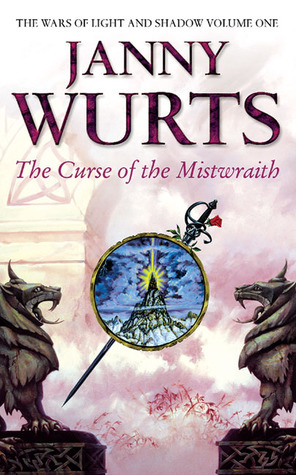 To have such a legendary writer as the international best-selling author Janny Wurts interview with Six Elementals is an incredible honour. I am so excited about this and wish to thank Janny for joining me! Janny is a writer with such an extensive and impressive breadth of work, that instead of mentioning currently published works merely in terms of individual books, I am compelled to mention her writing largely in terms of series! Janny’s current published works include: The Cycle of Fire Trilogy; The Empire Trilogy (co-written with Raymond E. Feist); The Wars of Light and Shadow Series; stand-alone novels Master of Whitestorm, Sorcerer’s Legacy, and To Ride Hell’s Chasm; novella The Gallant; the story collection That Way Lies Camelot; and numerous short stories including Silverdown’s Gold, Blood, Oak, Iron, Child of Prophecy, Watchfire, Last of Her Kind, Finder’s Keeper, Moebius Trip, Sundering Star, Reins of Destiny, and The Decoy.
To have such a legendary writer as the international best-selling author Janny Wurts interview with Six Elementals is an incredible honour. I am so excited about this and wish to thank Janny for joining me! Janny is a writer with such an extensive and impressive breadth of work, that instead of mentioning currently published works merely in terms of individual books, I am compelled to mention her writing largely in terms of series! Janny’s current published works include: The Cycle of Fire Trilogy; The Empire Trilogy (co-written with Raymond E. Feist); The Wars of Light and Shadow Series; stand-alone novels Master of Whitestorm, Sorcerer’s Legacy, and To Ride Hell’s Chasm; novella The Gallant; the story collection That Way Lies Camelot; and numerous short stories including Silverdown’s Gold, Blood, Oak, Iron, Child of Prophecy, Watchfire, Last of Her Kind, Finder’s Keeper, Moebius Trip, Sundering Star, Reins of Destiny, and The Decoy.
P.L.: I am over the moon to have the chance to speak to you Janny! Thank you so much for joining Six Elementals Interviews! Janny, you are widely acknowledged as an iconic writer. You have been mentioned in the same breath, in many circles, as J.R.R. Tolkien, G.R.R. Martin, Ursula Le Guin, and many of the truly elite fantasy authors that have ever lived. https://www.ranker.com/crowdranked-li… .
Your work has been nominated for The British Fantasy Award. You are also a highly accomplished illustrator, whose illustrations have won prestigious Chelsea Awards (formerly the ASFA awards, given by the Association of Science Fiction and Fantasy Artists to recognize individual artistic works and achievements during a given year).
After reading your books, you have become my personal favourite author of all time, on a list that includes the likes of Bernard Cornwell, N.K. Jemisin, and John Gwynne. Your novels have been international best-sellers, and you have been writing books for decades. Of all your many works, what is the one you are most proud of, and why? Does that differ from your own favourite work?
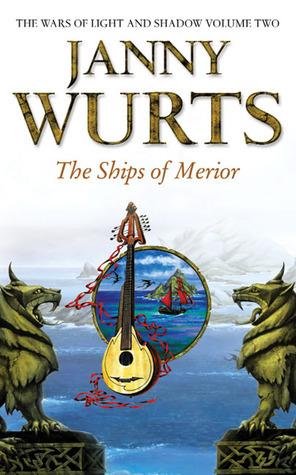 Janny:
Terribly hard to answer this because each book was written for a different reason, and it’s like comparing apples to oranges – the flavors are distinct but how can one choose a favorite?
Janny:
Terribly hard to answer this because each book was written for a different reason, and it’s like comparing apples to oranges – the flavors are distinct but how can one choose a favorite?
Sorcerer’s Legacy
– debut novel – was written for sheer escape entertainment, but it also handled a feisty heroine who was both widowed and pregnant – thrust into the heart of a seriously dangerous palace intrigue. I am proud of Elienne for being a kick your butt survivor, but not with muscle and no weapons. She fights on her merits, and she was the reason Ray Feist asked me to collaborate on the Empire Trilogy.
Master of Whitestorm pretty much is a novel about trauma and facing the greatest fear and overcoming that. What it means to run, and what it means to stand and face the demons in the closet. Of course it can be read as a simple adventure sword and sorcery, but there are also themes interwoven that go a bit deeper.
Cycle of Fire trilogy is the only time I wrote a coming-of-age story. But I am pleased to have tried something a little different – all three young protagonists are flawed, and some of them triumph and some will fail totally, destroyed by their flaws, not to recover. But to try to make that story sensitive enough to bring the reader into sympathy with the worst side – there was the challenge.
Empire series with Ray really stepped out of the usual fantasy mold for the sort of fantasy written at the time. I don’t think either one of us ‘set out’ to do that (the collaboration was totally a 50/50 effort). But my experience visiting a friend in Korea and many world travels impacted the story. The idea that a woman had to change her culture to survive – and change it permanently to spare her family – that’s a strong theme. I was utterly floored, once, when a young lady from Japan met me at a convention with her translator – and I was told the books were considered subversive women’s literature in her culture – that was amazing to hear, and deeply touching.
To Ride Hell’s Chasm was probably the book that wrote the fastest, it was a nonstop on fire roll and I finished the draft in 8 months, which is very fast for me! I’d set out to write a story about the spirit of the law vs the letter of the law and the moral stance of the warrior: what responsibility does the man who holds the weapon truly wield, and where does his personal choice shoulder the burden of his orders…but as I began the first draft, bingo, in walks the main character and he is POC and that added another very sharp dimension to the story. I faced a choice, and I chose to handle racial prejudice with the gloves off, let the story run. Not only for the human elements involved – but the animals. Part of the inspiration for the story was a long-distance race called the Tevis Cup, where horses cover 100 miles of difficult terrain in 24 hours…I have ridden all my life, and the animals are as much the heroes of this story as any of the characters on two legs.
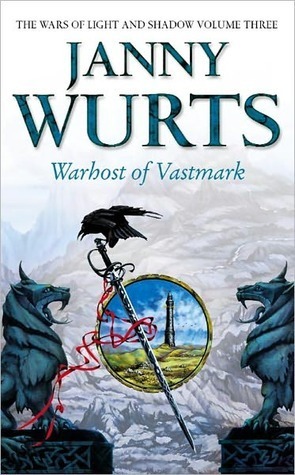 Wars of Light and Shadow
is the biggie of them all, it has the most depth, the most complexity, the most careful planning as it was always intended to be a long work, a story in five arcs. It is a book that stands on many themes, but it (hopefully) tears down the myth of history as written by the victor. It is a slow burn, carefully laid story that takes you for a ride on your assumptions, then rips the rug out from under what you thought you saw or believed, not just once, but repeatedly. Beliefs get stood upright, flipped, and run through the shredder because each time the viewpoint expands, the scenery changes. It does not extol war as a solution; it does not endorse many of our societal presumptions – but shreds them one after the next, until, in fact, Athera is not anything like the ‘classic’ fantasy scenery we are handed – it is a life work, I am extremely proud of how it has finished out (the final volume is in complete draft right now) – if I had to wish for one thing, it would be that our human society would wake up and stop! making war and killing a noble pursuit, and if we could at last admit the truth that violence solves nothing. There are so many themes tied into this huge series, I cannot begin to scratch the surface, it takes a read to open it all up – but there is also plenty of subversion of capitalism, and no question, plenty of themes shredded with the gloves off, which one can do writing fantasy, that’s one of the sharpening points.
Wars of Light and Shadow
is the biggie of them all, it has the most depth, the most complexity, the most careful planning as it was always intended to be a long work, a story in five arcs. It is a book that stands on many themes, but it (hopefully) tears down the myth of history as written by the victor. It is a slow burn, carefully laid story that takes you for a ride on your assumptions, then rips the rug out from under what you thought you saw or believed, not just once, but repeatedly. Beliefs get stood upright, flipped, and run through the shredder because each time the viewpoint expands, the scenery changes. It does not extol war as a solution; it does not endorse many of our societal presumptions – but shreds them one after the next, until, in fact, Athera is not anything like the ‘classic’ fantasy scenery we are handed – it is a life work, I am extremely proud of how it has finished out (the final volume is in complete draft right now) – if I had to wish for one thing, it would be that our human society would wake up and stop! making war and killing a noble pursuit, and if we could at last admit the truth that violence solves nothing. There are so many themes tied into this huge series, I cannot begin to scratch the surface, it takes a read to open it all up – but there is also plenty of subversion of capitalism, and no question, plenty of themes shredded with the gloves off, which one can do writing fantasy, that’s one of the sharpening points.
P.L.: Many would consider the last series you mention, your War of Light and Shadow Series, as your signature books, and it is apparent you feel the same. They are a momentous accomplishment, of truly astounding breadth and scope. Having read the first book, The Curse of the Mistwraith, I can attest that it is one of the best books I have ever read. I can’t wait to immerse myself in the rest of the series. Curse of the Mistwraith is approximately 800 pages, and the rest of the novels in your 11-book series are similar in length. How much time and effort went into crafting something of the scale of War of Light and Shadow? How did you conceive the idea for the series?
Janny: Honestly? Five decades! I had the seed idea in 1972. The planning and first outline written than encompassed a fantasy series where the blond, upright, charismatic HERO maybe wasn’t; and the small, secretive, dark-haired guy maybe wasn’t EVIL. Set on a world that ‘appeared’ to be familiar, but that would, in the end, be nothing of the kind. I started out planning a very deep back history and doing a lot, a whole LOT of research, so the unbelievable bits would synch hard with realistic bulwarks…and also, doing life experience so that you would ‘be there’ for some of the serious action – weapons research, offshore sailing, hands ON sorts of experience to add an edge to the pages – in the course of figuring out the setting and the ‘mix and match’ bits of warfare etc taken from our history (the world Athera has restrictions, so it does not follow our timeline for evolution of tech, etc)…in the course of doing the serious reading to get to the pith – I encountered a documentary of Culloden when the clans were finally broken in Scotland. It showed what Really happened with the gloves ripped OFF – no poetry, no ballads, no Bonnie Prince Charlie – the ugly Actual of what occurred – right as I had just finished doing all the research on wars/tactics/weapons from roughly Roman empire forward to gunpowder – and man, I came out of that theatre ANGRY…because I realized, full stop, our culture ennoblized war – our news, our history, our Entertainment – glorified war and painted such a damnably false picture of might makes right, justifying every sort of atrocity and solving nothing. That film – in stark black and white – reshaped EVERY war and tactic I had just read on paper and showed the falsehood in graphic terms. And: fantasy was about the worst offender – the Great Evil defeated by the Great Good on a bloody noble battlefield got blown to shreds.
 Right there, I decided War of Light and Shadow was gonna shred the myth, tear it sideways and leave it dead on the floor. So that shifted the course of a younger me into some sterner stuff – Wars of Light and Shadow is a story in 5 arcs, and it is all about ripping assumed values to pieces and not stopping there, but reassembling them in a different form altogether, and winding that into the lives of very real characters in ways we don’t see too often in Fantasy. Where the ‘hero’ of one scenario might be the villain in another – that any heroic quality has its flip side…and in the different setting, it could be the factor to bring down the roof. You would not want a Patton at a peace talk…so the idea that ‘it takes a village’ of talent to build a society and not any one quality alone.
Right there, I decided War of Light and Shadow was gonna shred the myth, tear it sideways and leave it dead on the floor. So that shifted the course of a younger me into some sterner stuff – Wars of Light and Shadow is a story in 5 arcs, and it is all about ripping assumed values to pieces and not stopping there, but reassembling them in a different form altogether, and winding that into the lives of very real characters in ways we don’t see too often in Fantasy. Where the ‘hero’ of one scenario might be the villain in another – that any heroic quality has its flip side…and in the different setting, it could be the factor to bring down the roof. You would not want a Patton at a peace talk…so the idea that ‘it takes a village’ of talent to build a society and not any one quality alone.
This is not wish fulfilment fantasy, I can hope it entertains, but there are hard moments of reckoning with idealizations written in. I spent three decades working on the concepts and the world before Vol I ever came out, and fifty years in the actual start to finish accomplishment. There is a lot more to the iceberg underneath than the books themselves ever reveal. If you are just taking a look at this series – it is seriously adult in concept, slow burn, and carefully staged. The hammer always falls – I write for finishes, each volume brought to a finale. It is not a set of books to be digested in a rush. Choose one of my other series for a more simplistic read if you want an easier starting point.
P.L.: Don’t think one can go wrong starting with any of your books. Your incredible stand-alone work, entitled To Ride Hell’s Chasm, is a simply phenomenal book. It is beautifully written, and it also tackles some difficult themes, such as racism. For those who have not read this novel, can you tell us a little about it, what inspired you to tackle these challenging themes, and what kind of research you did to make the book so engrossing?
Janny:
To Ride Hells Chasm
– this book had some fun sparks to start the fire. One was: people were ‘complaining’ I could not ‘finish’ a series – (Light and Shadow was at its mid point volume in publication order). So I wanted to write a book that ran on a very simple threat to a kingdom that was Not straightforward – and it moved start to finish very fast. The plot time for this novel is five and a half days, so it sort of reads like a fantasy 24. I was inspired by the long distance endurance race the Tevis Cup, mentioned above – and ‘what if’ horses were necessary to saving a kingdom? I have been an equestrian most of my life, I ride for a Search and Rescue mounted team – so much is owed to the horses, and yet, they are seldom credited for what they give, and give willingly in trust. So I wanted to write a story where the horses were also heroes as much as any person. Next into the puzzle, I wanted to stand the Missing Princes trope on its head. We’ve read plenty of stories where she was ‘forced into marriage’ and ran off or whatever – well, what if the match seemed made in heaven? and what then if she vanished? I’d written the outline where two warriors were charged to find her by the king, and I wanted two men of opposite backgrounds entangled in two patterns of ethics…what happens when the spirit of the law collides with the letter of the law – which is right, which is wrong – how can you choose the ethical path forward? And who holds the power, truly, the man giving the orders OR the individual holding the lethal weapon with the lethal choice?
That is where the story began, but it all shifted sharp focus when Mykkael stepped up on the page and he is Black. I have had the wonderful and also the wrenching experience of working with people from many walks of life, and seeing at first hand situations in other countries, other cultures, other viewpoints that are very different from the culture I was born to. In walks Mykkael – and with him came all of the frustrations and the pains and the anguishes witnessed – and that instantly became a driving force in this story. It is About racism, pernicious, horrible, endemic, unfair, and so terribly often thoughtlessly based on Assumptions Never Challenged. I put a lot of frustration and rage in these pages – scared to death – because I know I come from a privileged background, no question of it – how do we fight? With all we have. So I pulled off the gloves, had my editor behind me, and let the story tell itself. I can hope the story is a good read; I can also hope that when the pages are done and the cover is closed, maybe a few readers will ask themselves: how much talent do we LOSE WORLDWIDE to our persistent prejudices and our thoughtless assumptions. Hells Chasm was written to throw that into relief. All the characters in it have agency. Every single one plays their part. And not only for Mykkael, but the kingdom relied on other characters stepping up. Even the fat lady sings in the end. And I have been extremely fortunate to have sat at the feet of elders of other cultures entirely different than mine – by the last pages, I can only hope to have slipped a little of my awe and wonder into the pages, that this world is HUGE and humanity has many facets. I tried to step out of a few of the boxes, time and posterity will be the judge.
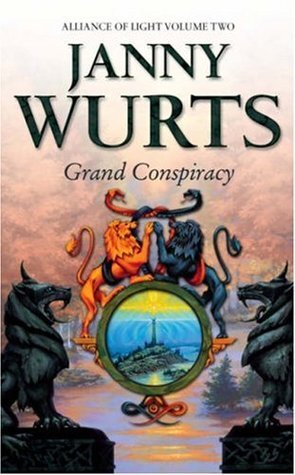 P.L.: Congratulations on the rights to The Empire Trilogy, which you co-wrote with Raymond E. Feist, being acquired in order to be potentially turned into a major television event!
P.L.: Congratulations on the rights to The Empire Trilogy, which you co-wrote with Raymond E. Feist, being acquired in order to be potentially turned into a major television event!
You must be thrilled! Tell us please, for those writers amongst us who have considered co-authoring a book, how does writing something of that magnitude with another legendary author work? How does the workload get divided? How do you write something that feels entirely cohesive, as if it were composed by a single author, though it’s written by more than one person?
Janny: Ray had this idea he wanted to do, with a first chapter and a finale concept, and he wanted a female lead. So he asked, he begged, he badgered, and I said, I’d beta read, etc, and stood him off until the Day I caved in because the story was just too seriously cool NOT to collaborate with him. I was a nobody with four novels; he was just writing Silverthorn, not yet on the Times list, so we were just authors doing our thing. We had no idea.
We began with a solid contract because Ray had his Riftwar worlds established in his other books, and we wanted to be sure we covered contingencies, if one or another of us dropped out midway, what would happen – so we sat down with the agent (Ray’s at the time) and hammered out the ‘what ifs’ so we each knew where we stood.
Then we blasted out the outline for what became vol I and II, Daughter and Servant, in about 4 hours of gestalt face to face at a convention. Off we went. We wrote chapter one or so together face to face, then, after that, parceled up the outline – he’d write this bit he was interested in, and I’d do that bit – then we ‘swapped’ the files by dial up modem and each OVERWROTE the others’ files, then we swapped again, and again, nobody Looked at what hit the cutting room floor, nobody checked who changed what – we just took what was the latest iteration on the page at the time and kept working it, until – bingo – you had a blend of styles, nobody could tell anymore who wrote what. And any surprises ‘sprung’ into the text just got incorporated seamlessly, until we had a contiguous whole.
We found the page length getting horrific!!! And realized, oh noes, we really had an ‘outline’ covering two books; and when we realized there had to be a split to fit it all in, somebody – who knows who – in gestalt planning figured out that Mara was not going to escape notice by the Assembly of Magicians – and Mistress was born – we had a trilogy. So we went back to contract and expanded to a trilogy and here we are today.
The adaptation is extremely exciting because it has potential elements that can include all the classic fantasy elements of Ray’s Midkemia and the world culture views and female lead of Empire. Six Studios is just incredibly enthusiastic and bent on bringing in the best talent they can and stay true to the original story in the process – so we are on the edge of our seats, thrilled, and excited to see where it will lead. No question the team is serious and in love with the books. It’s exciting that the news is public at last. If we can have a story that melts east and west into a production that brings the love of fantasy together, I will be entirely happy to see a fantasy that can bring all that together in a series. By the talent Six Studios has brought in – they have serious chops – no question this will be an adaptation to watch.
P.L.: We can’t wait to see it come to the screen! Your legacy is already cemented as a famed author, fantastic illustrator, and a wonderful supporter of others in the writing community. Your writing career has already been one that most people could only dream of. What else would you like to accomplish as an artist and member of the writing community in the next few decades?
Janny:
Lord, I really don’t know! The best thing I can say is, I keep my enthusiasm by surprising myself, and who knows where that is going to lead? I have no idea! I have Just completed vol 11 of Wars of Light and Shadow, and really haven’t had time to look down the road from there. I do have a small stand alone novel – a nautical fantasy – four chapters down. I may do some short work just to refresh the page. I may try a thriller bringing in my Search and Rescue experience….as far as the field goes, I’d like to bring attention to really superb works being written that are not well known, or older works that fly under the radar that really deserve a wider audience, and as far as possible passing on what I know to new writers and giving them a boost where I can – paying it forward. The algorithm is so pernicious about burying all but the most popular works, and it is such a wilderness of signal to noise on the internet scene – if I can do my small part with sharing the love and encouragement of new talent and old, forgotten talent that is still striving – there you go. It’s a great satisfaction to recommend and book or an author and seeing a reader connect to another book they can love. That’s huge and a gift in itself.
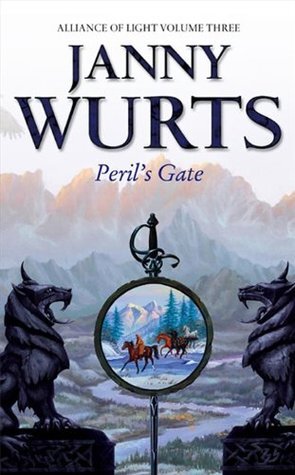 I’d like to also see more Writer-Illustrators out there! No reason the two skills have to be specialized. I know the row I had to hoe to get my artwork up there and accepted and to do my own cover art – so it is cool when I see others doing the same. Yes, a book can be illustrated by a talent, but truly: you have ONE CHANCE to ‘see’ a work from the author’s eye view. Why not?
I’d like to also see more Writer-Illustrators out there! No reason the two skills have to be specialized. I know the row I had to hoe to get my artwork up there and accepted and to do my own cover art – so it is cool when I see others doing the same. Yes, a book can be illustrated by a talent, but truly: you have ONE CHANCE to ‘see’ a work from the author’s eye view. Why not?
P.L.: You are a hard act to follow Janny! There are lots of talented creatives out there, but few can combine your level of writing plus illustrations! Janny this is the biggest highlight of 2022 for me so far, without question, being able to chat with you! I truly appreciate you joining me on Six Elementals Interviews! Thank you so much! In lieu of a sixth question, I’d like to leave it open for anything else you’d like to add before we finish the interview?
Janny: PL – thank you so much for asking me for this interview! Chatting with you is a huge privilege, so many ideas and serious discussions, it’s a rare mix. I have read your first book, A Drowned Kingdom, and I am in awe of the huge and meaningful concepts you are tackling, and not just that – the world you have drawn, and Atalantyx – wow. It is words that paint a vivid and detailed picture, just made for a tapestry of imagination. The story is bold, it tackles big issues and has vivid characters – heroic and flawed – I wish you well going forward and cannot wait to read volume II. Be bold, be fearless, be you – and for gosh sakes, people, if you have not tried PL’s book, get a copy and read it!
P.L. I am completely humbled by your kind words, Janny. Thank you so much. I am so happy you enjoyed A Drowned Kingdom. I am so looking forward to reading the rest of your incredible books.
Original Interview Appears Here
Buy The War of Light and Shadow Series hereBuy To Ride Hell’s Chasm here
Buy Master of Whitestorm here
Buy Sorcerer’s Legacy here
Buy The Cycle of Fire: The Complete Series
Buy The Riftwar Cycle here
Website
http://www.paravia.com/JannyWurts

The post Six Elementals Interview – Janny Wurts appeared first on BEFOREWEGOBLOG.



